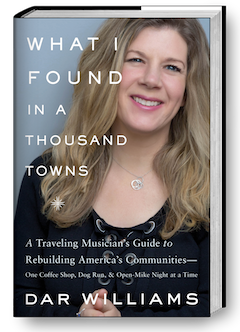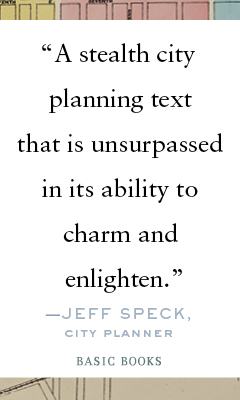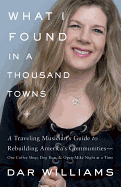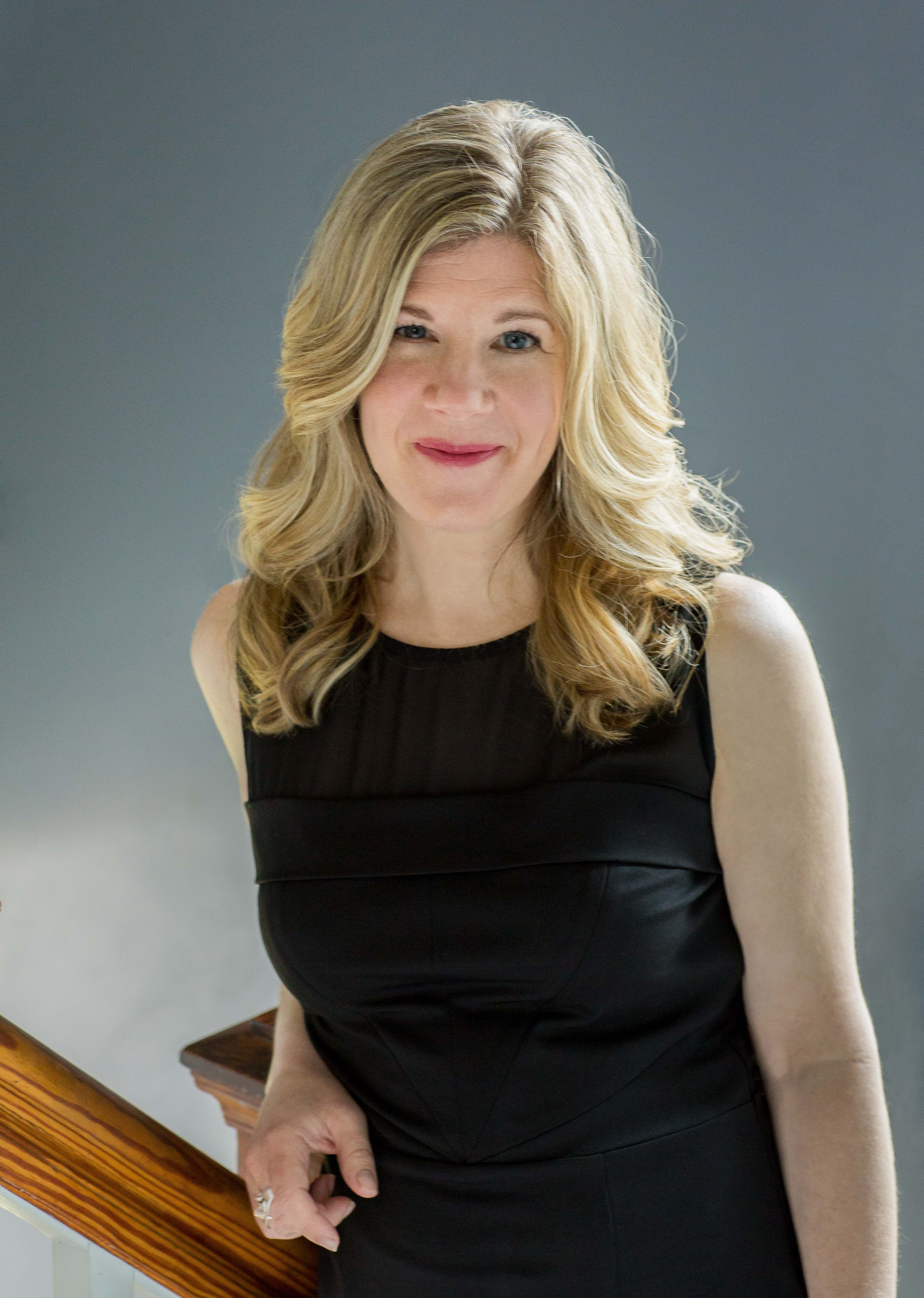What I Found in a Thousand Towns: A Traveling Musician's Guide to Rebuilding America's Communities--One Coffee Shop, Dog Run, & Open-Mike Night at a Time
by Dar Williams
It shouldn't be surprising that an acclaimed folksinger-songwriter is able to bridge cultural divides in the United States and bring people together with, well, folksy wisdom. In this case, however, "folksy" doesn't mean unsophisticated. There is plenty of complexity delivered with down-to-earth sincerity, a genuine sense of optimism and generosity in Dar Williams's What I Found in a Thousand Towns: A Traveling Musician's Guide to Rebuilding America's Communities--One Coffee Shop, Dog Run, & Open-Mike Night at a Time.
Williams's message is an urgent one: U.S. towns struggling in a postindustrial society can redefine themselves and flourish if their citizens are willing to step up and find ways to collaborate. She begins by defining "positive proximity," which is "a state of being where living side by side with other people is experienced as beneficial." The concept has tremendous practical value. Rather than dictating grand abstract notions of civic duty, "positive proximity," Williams explains, generates community momentum by simply opening up ways people can work together. She gives the example of someone grooming a sled hill in their community. The hill lures out children to play, which brings out PTA members and other school volunteers, which leads to a bake sale, which leads to local farmers sponsoring the event, which leads to greater community interest, which leads to a concert and reading series in the summer because "the slope of the hill is like a natural amphitheater." This kind of synergy occurs when people look past their differences and open themselves up to the possibilities of communal living.
Divided into three thematic sections and nine chapters, What I Found in a Thousand Towns provides a cross-section of locales from which to draw lessons. In her chapter on Beacon, N.Y., Williams discusses the importance of cafés as communal hubs: "Cafés are my office on the road," she writes. "There is something about the conversation at the counter, the community art and flyers pinned up on the walls, and the fragments of discussion unfolding around me that make their way into my psyche and onto the page." In later passages, Williams addresses the importance of restaurants in general, art galleries, bars and open-mike nights--venues in which creatives can thrive and express themselves, helping to shape the overall identity of their communities. In chapters on Moab, Utah, and Wilmington, Del., Williams explores how towns can incorporate natural features to maximize scenic beauty and recreational opportunities, but also, in the case of Wilmington, how to build neutral public spaces in which racially and ethnically different residents can better interact and integrate. Natural landscapes and waterfronts can be great equalizers, Williams demonstrates.
In a similar fashion, Williams examines the importance of history and culture in building prosperous communities. This includes culinary culture as well. In a fascinating look at Finger Lakes, N.Y., Williams speaks of an "agrospheric consciousness," that is, an awareness of the synergy or potential synergy between local farmers, producers, food vendors and venues. As in the case of Finger Lakes, creative and collaborative food markets can help diversify and revitalize town economies struggling after the decline of 20th-century manufacturing, creating "a mutually reinforcing, geographically unique, and irreplaceable range of businesses." "Face-to-face, crate-hauling, keg-lifting, mutual support is essential to everyone's survival," she writes with trademark gusto.
Williams isn't just a great songwriter, she's a great prose writer as well. Throughout What I Found in a Thousand Towns, she demonstrates her ability to break down complex ideas into clear and relatable terms. To make her points, she draws on a diverse coalition of movers and shakers. She pulls from the work of social theorists, from writers like Gary Snyder and Adrienne Rich, but also interviews leaders and activists in the communities she explores. Her greatest gift to readers is her ability to be inclusive and find a role for everyone. She doesn't shy away from the divisions--political and otherwise--that can tear communities apart. But she uses humor and grace to bridge those divides. "That guy who stands up and calls the mayor a fascist every month or so?" she writes about the curmudgeons and spiky personalities that often pop up in public meetings. "That's just Bill. He volunteered for the community pancake breakfast in March."
At a time of hyper political divisiveness and dysfunction, Williams humanizes different personalities and reveals the beautiful potential that exists between people to work for the common good. Informative, insightful and forward-looking, What I Found in a Thousand Towns touches the mind and heart like a breath of fresh air. --Scott Neuffer








